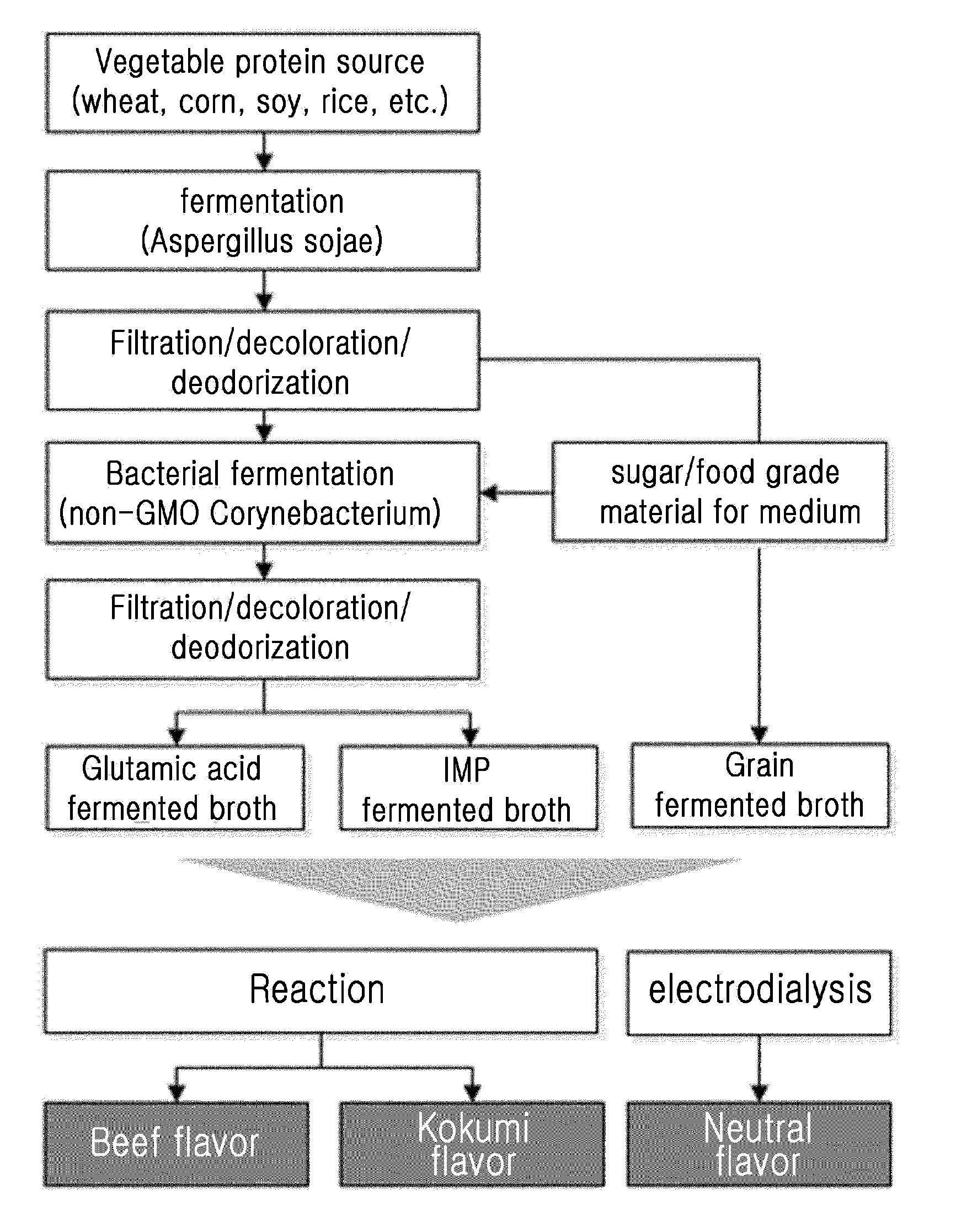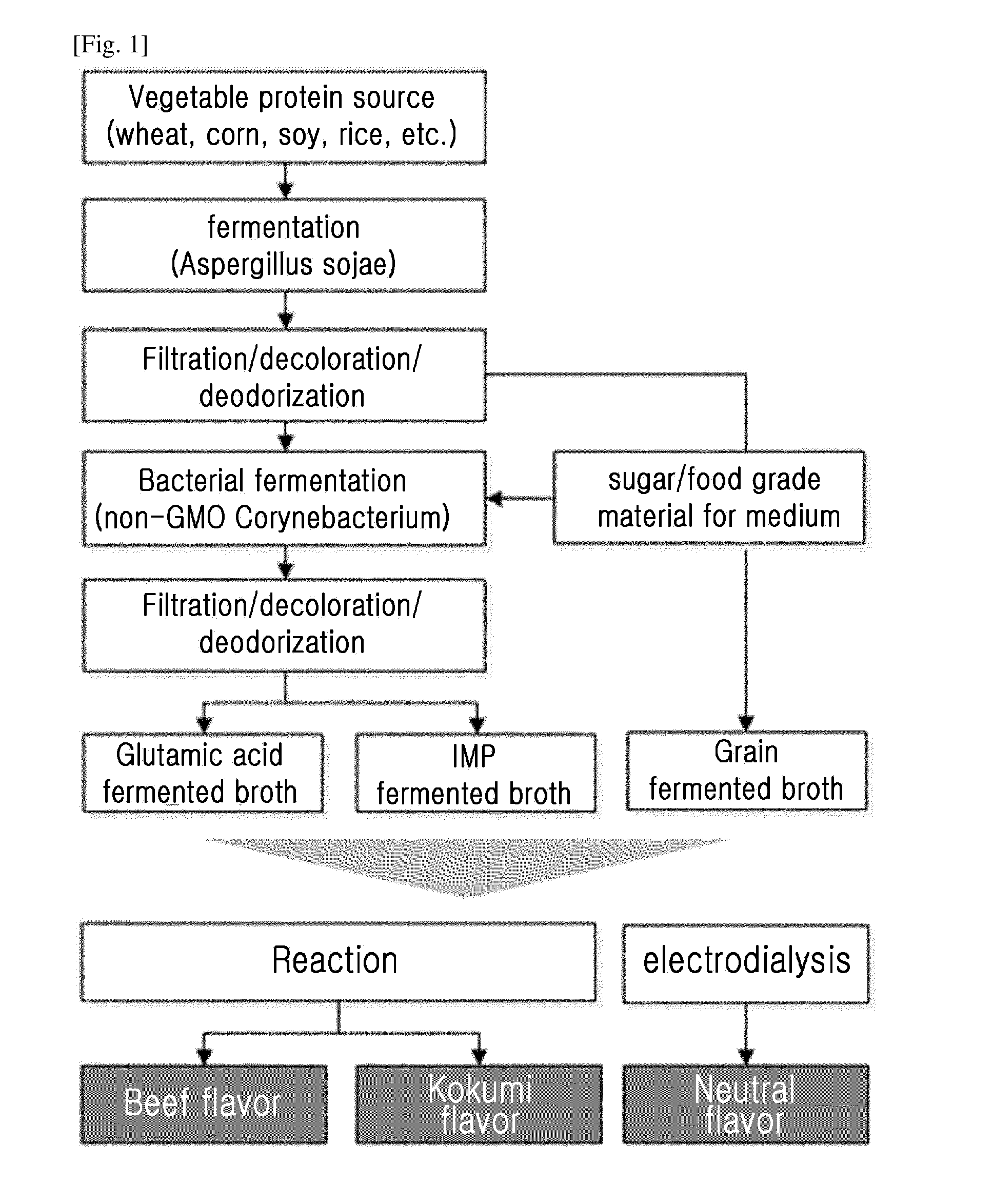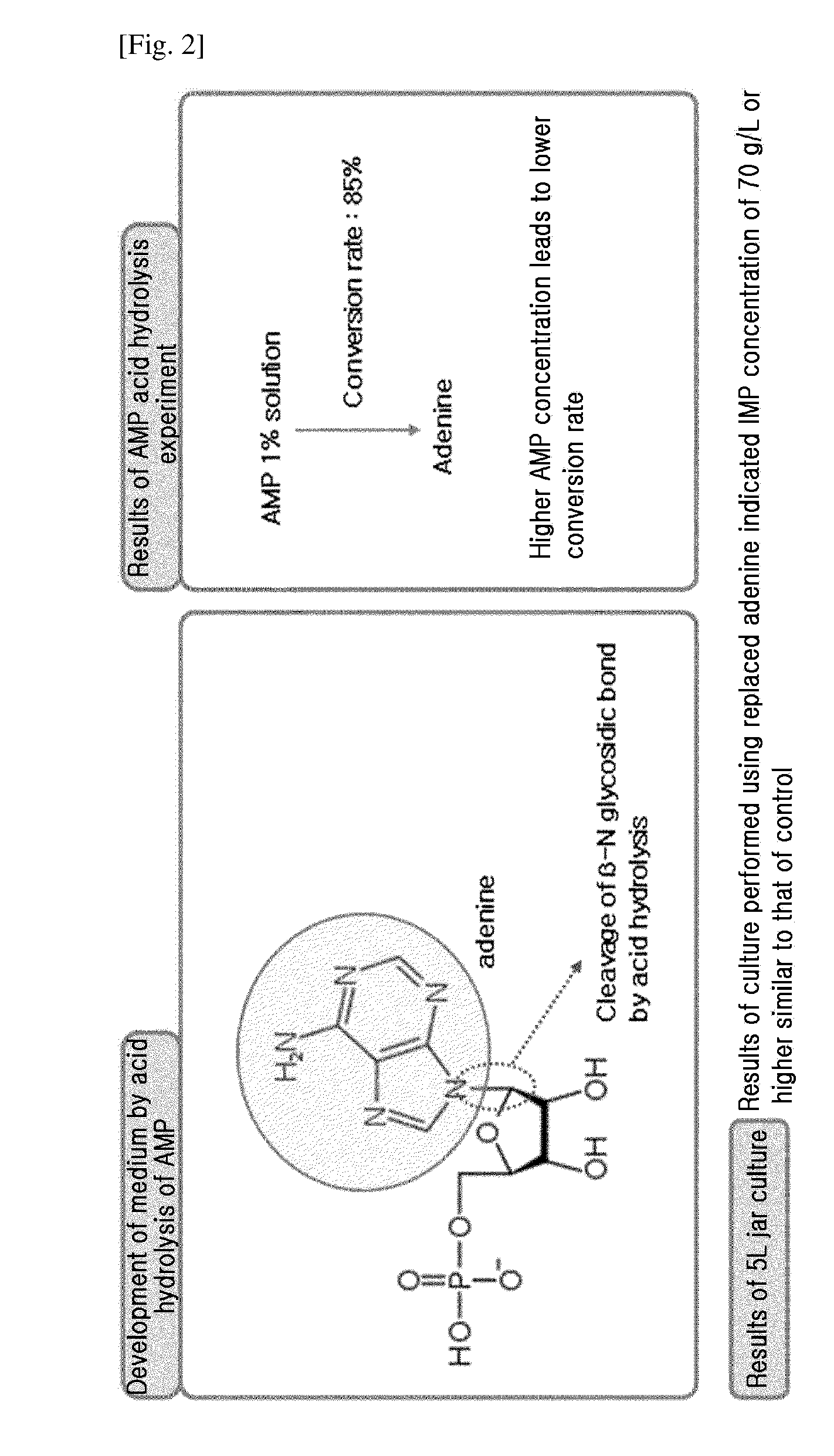Method for Preparing Natural Kokumi Flavor
- Summary
- Abstract
- Description
- Claims
- Application Information
AI Technical Summary
Benefits of technology
Problems solved by technology
Method used
Image
Examples
example 1
Fungal Fermentation of Vegetable Protein Source
[0058]For primary fungal fermentation, a substrate including grain materials such as soybean, corn, rice or wheat was cultured using Aspergillus sp. microorganisms as a fungal strain at a temperature of 20-35° C. for 24-72 hours, thereby preparing a fungal culture broth containing a high concentration of protease. Then, a vegetable protein source such as soybean, corn, rice or wheat was mixed with water to a high concentration of 25-35% and sterilized, and the above-prepared fungal culture broth containing a high concentration of protease was added to the sterilized vegetable protein source in a salt-free state to hydrolyze the vegetable protein source. Herein, the fungal culture broth was added in an amount of 10-100% based on the sterilized substrate solution, and the substrate was degraded at 40-50° C. for 48-96 hours to prepare a grain protein hydrolysate.
[0059]Specifically, flask culture and expansion culture were performed using A...
example 2
Bacterial Fermentation
[0061]To prepare an IMP fermented broth and a glutamic acid fermented broth using the grain fermented broth, a carbon source such as glucose or fructose, mineral salts such as Fe, Mg, Mn and Zn, and vitamins were added to the grain fermented broth prepared in Example 1, followed by sterilization, thereby preparing media for bacterial fermentation. The media for preparing an IMP fermented broth and a glutamic acid fermented broth were prepared, and for each of the fermented broths, media for flask culture (primary culture), expansion culture (secondary culture) and main culture were prepared.
[0062]2-1: Preparation of IMP Fermented Broth
[0063]Using Corynebacterium ammoniagenes CJIP009 (KCCM-10226) described in Korean Patent Registration No. 10-0397321 (corresponding to WO International Patent Publication No. WO2002-051984), an IMP fermented broth having an IMP concentration of 70 g / L or more was prepared.
[0064]Specifically, 50 ml of a primary culture adjusted to ...
example 3
Examination of Cell Growth Rate in Case in which Fungal Fermentation Product is Used in Bacterial Fermentation
[0072]In order to confirm the advantage of the case in which the first fermentation step for fungal fermentation and the second fermentation step for bacterial fermentation are continuously performed, the growth rate and degree of proliferation of bacterial cells in the case in which the vegetable protein degraded by the first fungal fermentation step is added as a nutrient source and in the case in which the vegetable protein is not added were examined.
[0073]As a result, as can be seen in FIG. 4, in the case in which the vegetable protein degraded by the first fungal fermentation step was added as a nutrient source, the bacterial cells proliferated at a high rate and in a large amount compared to those in the case in which the vegetable protein was not added (FIG. 4).
PUM
 Login to View More
Login to View More Abstract
Description
Claims
Application Information
 Login to View More
Login to View More - R&D
- Intellectual Property
- Life Sciences
- Materials
- Tech Scout
- Unparalleled Data Quality
- Higher Quality Content
- 60% Fewer Hallucinations
Browse by: Latest US Patents, China's latest patents, Technical Efficacy Thesaurus, Application Domain, Technology Topic, Popular Technical Reports.
© 2025 PatSnap. All rights reserved.Legal|Privacy policy|Modern Slavery Act Transparency Statement|Sitemap|About US| Contact US: help@patsnap.com



